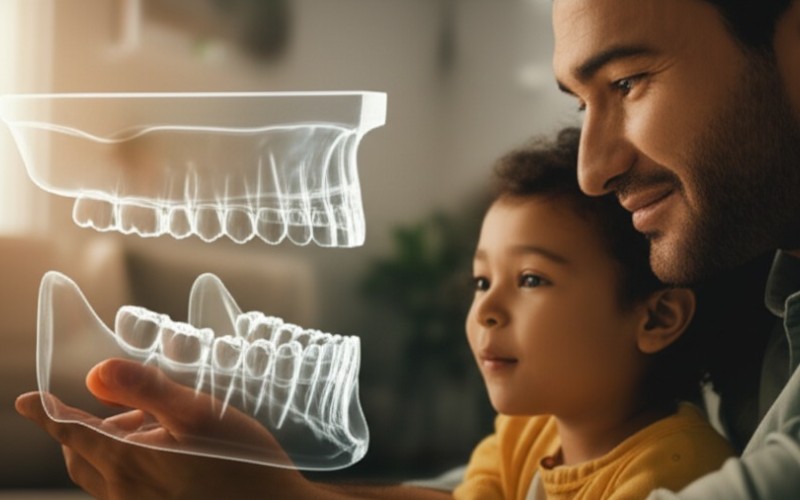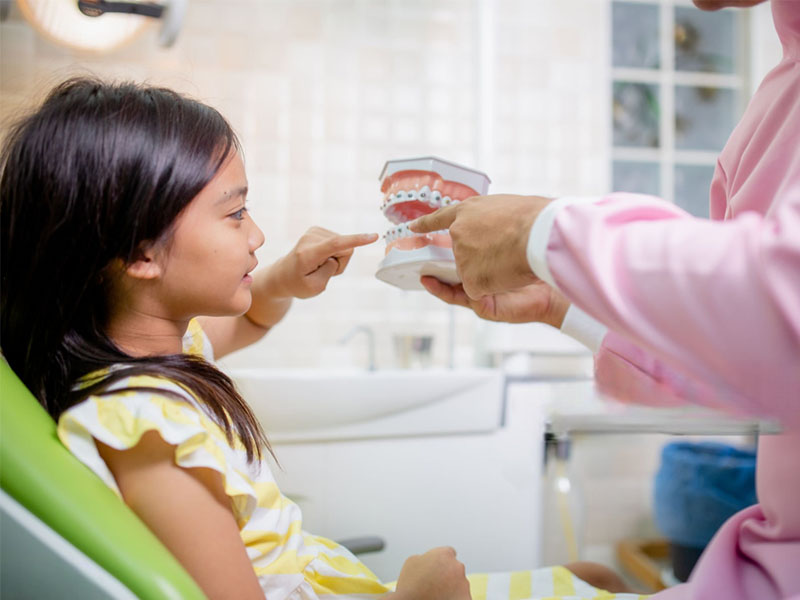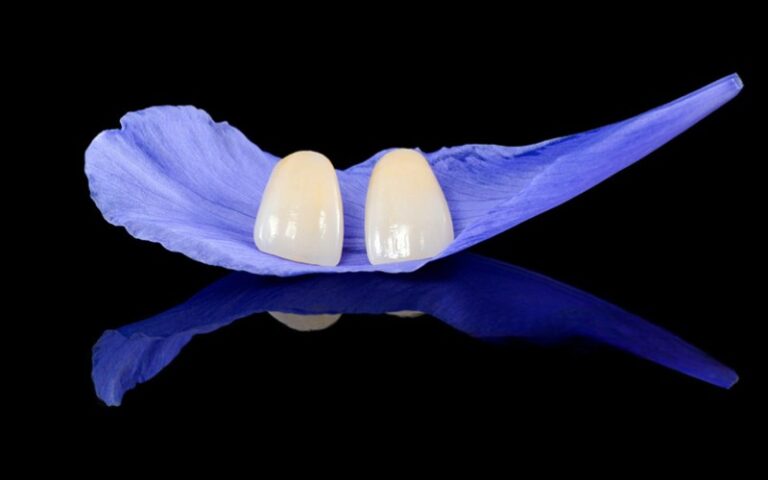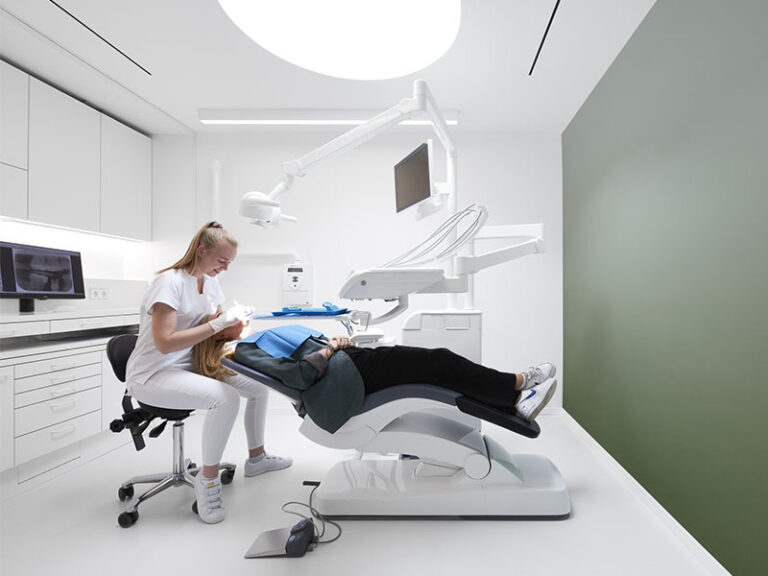
The Parent’s Guide to Two-Phase Orthodontic Treatment: Better Alignment Starts Early
As a parent, I know you want the best for your child. I’ve been there myself, looking at my kid’s smile and wondering, “Are those teeth coming in right? Will they need a brace?” It can be confusing. The world of orthodontics has its own language, and one term you might hear is “two-phase orthodontic treatment.” It sounds complicated, but I promise it’s not. I wrote this guide to break it down for you in simple, easy-to-understand terms. We’ll walk through what it is, why your child might need it, and what to expect. This article is worth your time because it will give you the confidence to talk with an orthodontist and make the best choice for your child’s long-term dental health and beautiful smile.
Table des matières
What Is Two-Phase Orthodontic Treatment, Anyway?
Let’s start with the basics. Think of building a house. You wouldn’t put up the walls and roof before you build a strong foundation, right? Two-phase orthodontic treatment works the same way. It’s a special process that tackles orthodontic problems in two separate stages. It’s a proactive approach that combines straightening teeth with guiding the physical development of the face and jaw. Not every child needs this, but for some, it’s the best way to get a healthy, stable smile for life.
The first phase happens when your child is younger and still has many of their baby teeth. The second phase happens later, usually when they are a teenager and have most or all of their permanent teeth. This two-phase approach allows an orthodontist to fix bigger issues with the jaw and bite first, creating a better environment for the permanent teeth to grow into.
I often tell parents that orthodontics is more than just about a straight smile. It’s about a healthy bite and a well-formed jaw. This special type of treatment for kids is designed to work with your child’s natural growth. Instead of waiting for all the problems to be fully set in place, an orthodontist can step in early. This early intervention can often make the second phase of treatment much shorter and easier. It’s a key part of modern orthodontic care.
Why Might My Child Need Two-Phase Orthodontic Treatment?
You might be looking at your child and wondering if they will need two-phase treatment. The main reason an orthodontist would recommend two-phase treatment is to correct problems with the jaw structure that can’t be fixed easily once the face and jaw have stopped growing. These are often issues that are more than just crooked teeth.
Some of these problems include a crossbite, where the upper teeth sit inside the lower teeth. They can also include a severe overbite or underbite. These issues are not just about looks. They can affect how a child chews, speaks, and even breathes. The goal of this early orthodontic work is to guide jaw growth. By starting treatment early, an orthodontist can use a child’s natural growth spurts to their advantage, helping the upper and lower jaws grow into the right size and position.
I remember a young patient whose lower jaw was growing much slower than his upper jaw. By starting phase 1 treatment, we were able to encourage that lower jaw to catch up. If his parents had waited, he might have needed much more invasive treatment in the future, possibly even surgery. This is why addressing orthodontic issues early can be so important. The treatment helps prevent more serious problems down the road.
When Does Treatment for Your Child Typically Begin?
Timing is everything. The American Association of Orthodontists has a clear recommendation that has helped thousands of parents like you. They suggest that a child should have their first orthodontic evaluation by age 7. This might sound very young. At that age, your child has a mix of baby teeth and permanent teeth. But this is the perfect time for an orthodontist to spot developing problems with the jaw and bite.
It’s important to understand that an evaluation does not mean your child will start treatment right away. In fact, most kids don’t need any work at that age. For most children, we simply say, “Everything looks good, let’s check again in a year.” But for those who do show early signs of significant orthodontic problems, this is when the treatment begins. The first phase of treatment is most effective between the ages of 7 and 10, when the jaw is still very pliable and growing.
This early check-up is a simple step that gives you peace of mind. It allows a trained professional to look at your child’s unique dental situation. They can then give you a clear roadmap. They will tell you if a single phase of treatment later on is fine, or if a two-phase orthodontic treatment would provide a better, more stable result. Starting treatment early is a decision based on a clear need, not just a set age.

What Happens in Phase One of a Two-Phase Orthodontic Treatment?
So, if your orthodontist says your child needs it, what does Phase One actually involve? This stage of treatment, also known as interceptive treatment, is all about creating a better foundation. The first phase focuses on fixing problems with jaw growth and making sure there is enough space for permanent teeth to come in properly. It’s not about making every single tooth perfectly straight just yet.
During Phase 1, your child might wear special orthodontic appliances. This could be something like a palatal expander to widen the upper jaw, or a special retainer to correct a bite problem. Sometimes, a partial brace might be used on a few teeth. The main goal of phase 1 is to guide the growth of the jaw bones. This treatment phase typically lasts about 12 to 18 months.
The beautiful thing about this first phase is how it works with the body. Because your child is still growing, the orthodontists can guide that growth in a positive direction. This can prevent the need for tooth extractions later on and can correct skeletal problems that would be much harder to fix in a teenager or adult. Think of this phase 1 orthodontic treatment as setting the stage for a simple and successful final act.
What Is the “Resting Phase” in Two-Phase Orthodontics?
After phase one of a two-phase orthodontic plan is complete, you don’t jump straight into the next step. This is a common point of confusion for parents, but it’s a very important part of the process. This period is called the “resting phase.” During this time, we take a break from active treatment and let nature do its work.
During the resting phase, we wait for the remaining permanent teeth to come in. The hard work of Phase 1 has already created a better environment for them. It has helped make the room they need to erupt without becoming crowded or stuck. Your child may need to wear a simple retainer during this time to make sure the corrections we made to the jaw stay in place. Your orthodontist will still see your child for check-ups every few months to monitor progress.
This break is wonderful for kids. It gives them time without any orthodontic appliances in their mouth before the next phase of treatment begins. It allows the new permanent teeth to settle in naturally. The length of this resting period varies for every child. It all depends on how quickly their permanent teeth decide to show up. This pause is a key part of what makes two-phase orthodontics so effective.
So, What Is Phase Two All About?
Once most or all of your child’s permanent teeth have come in, it’s time for the grand finale: Phase Two. This is the part of orthodontics that most people are familiar with. The goal here is simple: to move each tooth into its ideal final position. This is where we work on creating that perfect, beautiful smile and a healthy, functional bite.
Phase two treatment usually involves a full brace on all the upper and lower teeth. Today, you have more treatment options than ever, including traditional metal braces, clear ceramic braces, or even clear aligners. This second phase of treatment is usually much shorter and simpler because Phase 1 already did the heavy lifting. We’ve already corrected the underlying jaw issues and created the space needed for proper alignment.
Because the foundation is already solid, the second phase is all about fine-tuning. Your orthodontist will create a precise plan to get every tooth perfectly aligned with the others. This phase of comprehensive treatment ensures the teeth and jaw work together in harmony. At the end of phase two, your child will have a smile that is not only beautiful but also built to last a lifetime.
How Does an Orthodontist Decide on the Best Treatment?
Deciding on the best treatment for a child is a very careful process. It’s a combination of science, art, and experience. When you bring your child for their first orthodontic evaluation by age, the orthodontist will do a thorough exam. This includes taking X-rays, photos, and making models of your child’s teeth. This is all part of the diagnosis and treatment planning.
The orthodontist will look at many factors. They’ll assess the current relationship of the jaw bones to each other and to the face. They’ll look at how much space is available for the permanent teeth that haven’t come in yet. They will also look for specific problems like crowding, crossbites, or severe overbites. Based on all this information, they will create a personalized treatment plan.
It’s important to know that not every child will need two-phase treatment. Many kids can be treated very successfully with just one phase of traditional orthodontic work during their teen years. An ethical and experienced orthodontist will only recommend two-phase orthodontic treatment when it is truly necessary and offers a clear benefit. They will explain why a two phase treatment is the best option and what could happen if you wait. They will guide you every step of the way.
Will All Permanent Teeth Be In Place for Phase Two?
This is a great question I hear from many parents. The simple answer is: almost! The timing for Phase Two is specifically chosen to begin when most of the permanent teeth have come in. This is usually around age 11 to 13. The wisdom teeth, or third molars, are usually the only ones that haven’t come in yet, but they don’t affect this stage of treatment.
The reason we wait for the permanent teeth is that the goal of the second phase is to put all of these adult teeth into their final positions. You can’t do that until they are actually there. The resting phase we talked about is designed to perfectly time this transition. As soon as the last few baby teeth are gone and the new permanent teeth have erupted, phase 2 begins.
Your orthodontist will be tracking this all along. At each check-up during the resting period, they are watching the development of those last few teeth. Once the second phase begins, the orthodontist has a full set of adult teeth to work with. This allows them to use full braces or clear aligners to create a stable, healthy bite and a beautiful smile that will last.
What Are the Biggest Benefits of Starting Treatment Early?
When parents ask me if two-phase orthodontic treatment for kids is worth it, I always focus on the long-term benefits. This treatment provides a unique chance to solve problems that are much harder, or even impossible, to fix later in life. It’s a prime example of how an ounce of prevention is worth a pound of cure.
One of the biggest benefits is that it can reduce the need for more complex future treatment. By guiding jaw growth, we can often avoid the need to extract permanent teeth due to crowding. In some cases, it can even prevent the need for jaw surgery as an adult. The treatment offers a less invasive path to a healthy smile. The treatment duration for the second phase is often shorter, too.
Another key benefit is the improvement in a child’s self-esteem. Correcting a very noticeable bite problem or severe crowding early on can make a huge difference in how a child feels about their smile. This early treatment also helps protect protruding front teeth from being chipped or broken during play. The bottom line is that this treatment is a proactive approach that creates a healthier and more stable result.

How Do I Know if This Two-Phase Treatment is Right for My Child?
Ultimately, the question of whether two-phase treatment is necessary for your child comes down to a professional evaluation. You can’t be expected to know this on your own. My best advice is to follow the guidelines and schedule an orthodontic evaluation by age 7. This is the only way to know for sure if your child needs two-phase care.
During your visit, ask a lot of questions. A good orthodontist will take the time to explain everything clearly. They will show you the X-rays and explain exactly what they see. They should be able to tell you the pros and cons of starting treatment now versus waiting. If two phase orthodontic treatment is recommended, they should be able to explain the goals of Phase 1 and Phase 2 in a way that makes sense to you.
Remember, you are your child’s best advocate. Getting an early opinion from a specialist in orthodontics is a simple, painless step. It might confirm that all is well and no early treatment is needed. Or, it could be the first step on a path that leads to a healthier, more confident smile for your child. It’s a decision about investing in their long-term dental health, and that’s a choice you can feel good about.
Key Takeaways to Remember:
- See an Orthodontist Early: The American Association of Orthodontists recommends a check-up by age 7 to spot any major issues with the jaw or bite.
- Two Phases for Two Goals: Phase One fixes foundational jaw and space problems. Phase Two focuses on the final alignment of all permanent teeth.
- Works with Growth: This treatment uses a child’s natural growth to guide the jaw into a better position, which can prevent more invasive treatments later.
- There is a Break: A “resting phase” between Phase One and Phase Two allows the remaining permanent teeth to come in naturally.
- Not for Everyone: Many children do not need two-phase treatment. An orthodontist can determine if it is the best option for your child’s specific needs.
- The Goal is Health and Stability: The purpose is to create a beautiful smile that is also healthy, functional, and stable for a lifetime.




